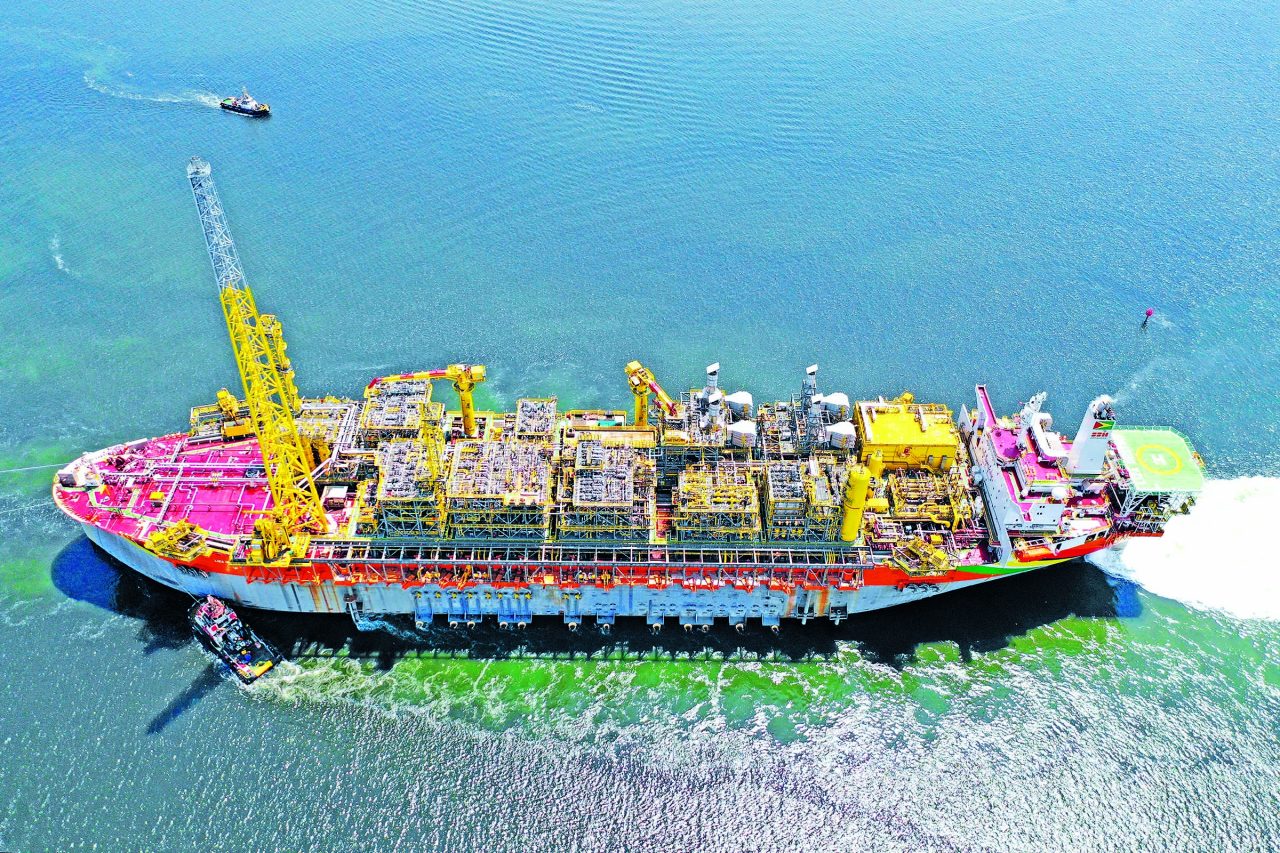With oil production already on the way and the country gearing up to sell its share of the petroleum, the Guyana National Bureau of Standards (GNBS) said it is prepared for its role in the budding sector, particularly as it relates to ensuring that weighing and measuring devices used in the crude trade are verified.
 This is in accordance with its mandate from the Weights and Measures Act of 1981. The GNBS is required to ensure that all weighing and measuring devices used in commercial trade are verified. These include measuring devices used in the emerging Oil and Gas Sector of Guyana.
This is in accordance with its mandate from the Weights and Measures Act of 1981. The GNBS is required to ensure that all weighing and measuring devices used in commercial trade are verified. These include measuring devices used in the emerging Oil and Gas Sector of Guyana.
It is against this backdrop that aggressive recruitment and further training of staff members were undertaken by the GNBS in preparedness to fulfil its role in the Oil and Gas Sector, that is, to ensure accurate measurements during lifting of crude from the Floating Production Storage and Offloading (FPSO) vessel(s).
Through the support of the Guyana Petroleum Resources Governance and Management Project, the GNBS has benefited from the training of several inspectors of its Legal Metrology Services Department. These inspectors can now competently witness the proving/verification of the custody transfer meters used on FPSOs.
 Further, to maintain reliable measurements, the GNBS said in a statement on Thursday that it will conduct routine checks on the offshore facility to ensure that all points, which can affect the metering of the product, are sealed before and after offloading.
Further, to maintain reliable measurements, the GNBS said in a statement on Thursday that it will conduct routine checks on the offshore facility to ensure that all points, which can affect the metering of the product, are sealed before and after offloading.
Inspectors received the requisite training from the Measurement Service Division of Bureau Veritas of North America in accordance with the American Petroleum Institute (API) Petroleum Measurement Standards. The relevant API standards will be adopted as national standards and will be used for verification of the metering system on the FPSO.
Meanwhile, GNBS inspectors have also undergone the safety training required for transport and operation on the FPSO. These include the Helicopter Underwater Egress Training (HUET), which is necessary for personnel travelling to the offshore facilities; the Compressed Air Emergency Breathing System (CAEBS) training, for inflight and underwater emergencies; and training on the ISO 45001 Occupational Safety and Health Standard to enhance their safety awareness.
“The Bureau will continue to evaluate and expand its role in this emerging sector and further contribute to its sustainability through the provision of standards, testing, measurement and calibration services,” the missive detailed.
On December 20, United States oil giant ExxonMobil commenced production of Guyana’s oil in the Stabroek Block, where 14 discoveries of crude in commercial quantities have been made since 2015.
Production from the first phase of the Liza field, located in the 6.6 million acres Stabroek Block, is expected to reach full capacity of 120,000 barrels of oil per day in coming months, and the first cargo is set to be sold within several weeks.
In fact, the Department of Energy (DoE) last month announced that Shell’s Barbados branch will buy Guyana’s first three lifts. This is a short-term arrangement following the acceleration of first oil which will see Guyana’s first lift in February 2020. The Energy Department had explained that an open market Request for Proposals (RFP) will be launched early this year for a marketing agent to market Guyana’s subsequent crude entitlements from the Liza 1 field on a term basis.
With the 120,000 barrels expected daily from production in the Liza Phase 1 Development, it is estimated that Guyana will earn some US$300 million annually.
ExxonMobil had previously said there is potential for at least five FPSO vessels on the Stabroek Block, producing more than 750,000 barrels of oil per day by 2025. Liza Phase 2 Development is expected to start-up by mid-2022. It had been reported that the project would use the Liza Unity FPSO to produce up to 220,000 barrels per day.
With Hess Guyana Exploration Ltd holding 30 per cent interest in the Stabroek Block, ExxonMobil’s affiliate Esso Exploration and Production Guyana Limited (EEPGL) has 45 per cent interest and is also the operator of the 6.6 million acres block while CNOOC Petroleum Guyana Limited, a wholly-owned subsidiary of China’s state-owned CNOOC Limited, holds the remaining 25 per cent interest.
 This is in accordance with its mandate from the Weights and Measures Act of 1981. The GNBS is required to ensure that all weighing and measuring devices used in commercial trade are verified. These include measuring devices used in the emerging Oil and Gas Sector of Guyana.
This is in accordance with its mandate from the Weights and Measures Act of 1981. The GNBS is required to ensure that all weighing and measuring devices used in commercial trade are verified. These include measuring devices used in the emerging Oil and Gas Sector of Guyana. Further, to maintain reliable measurements, the GNBS said in a statement on Thursday that it will conduct routine checks on the offshore facility to ensure that all points, which can affect the metering of the product, are sealed before and after offloading.
Further, to maintain reliable measurements, the GNBS said in a statement on Thursday that it will conduct routine checks on the offshore facility to ensure that all points, which can affect the metering of the product, are sealed before and after offloading.